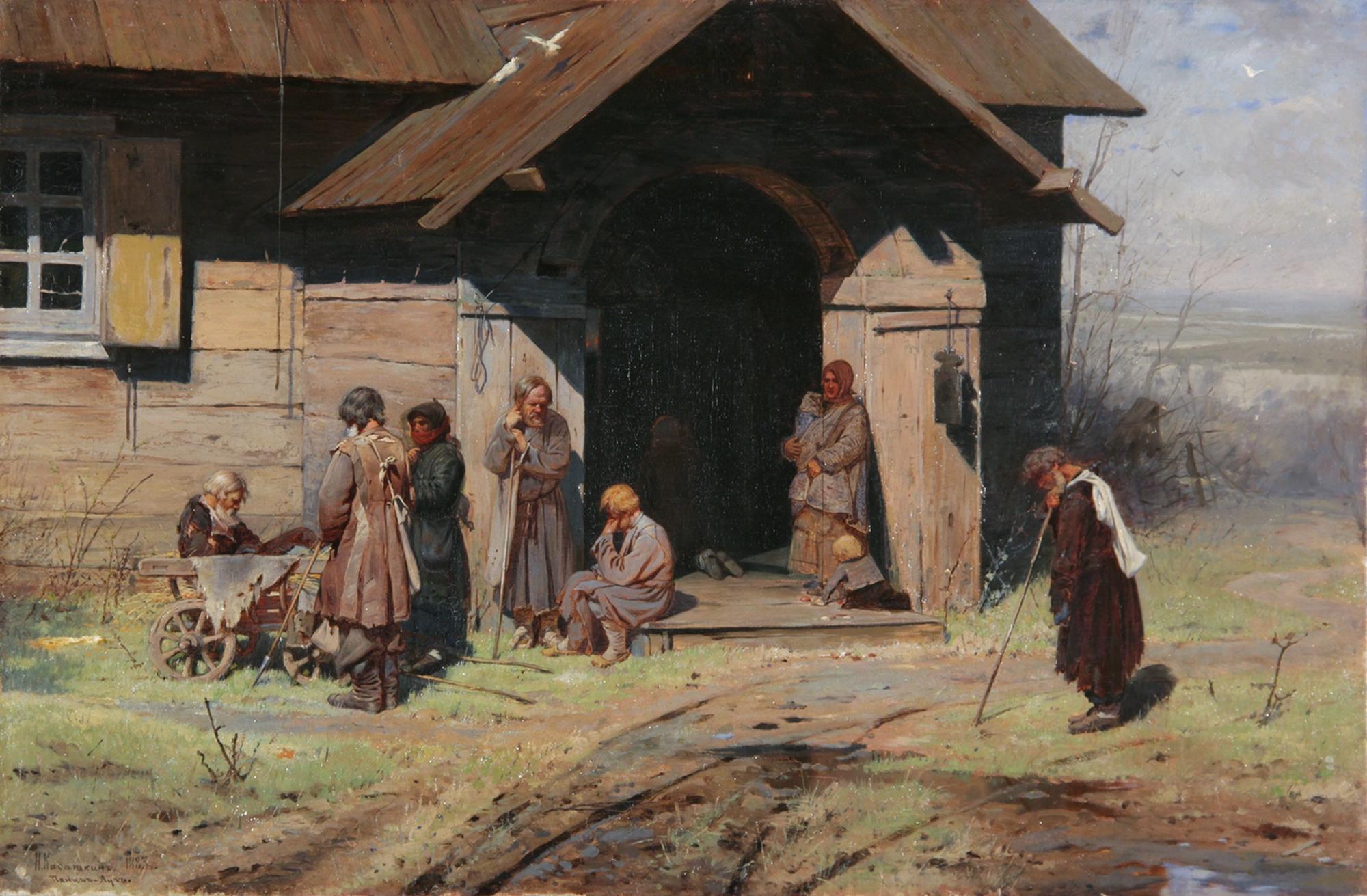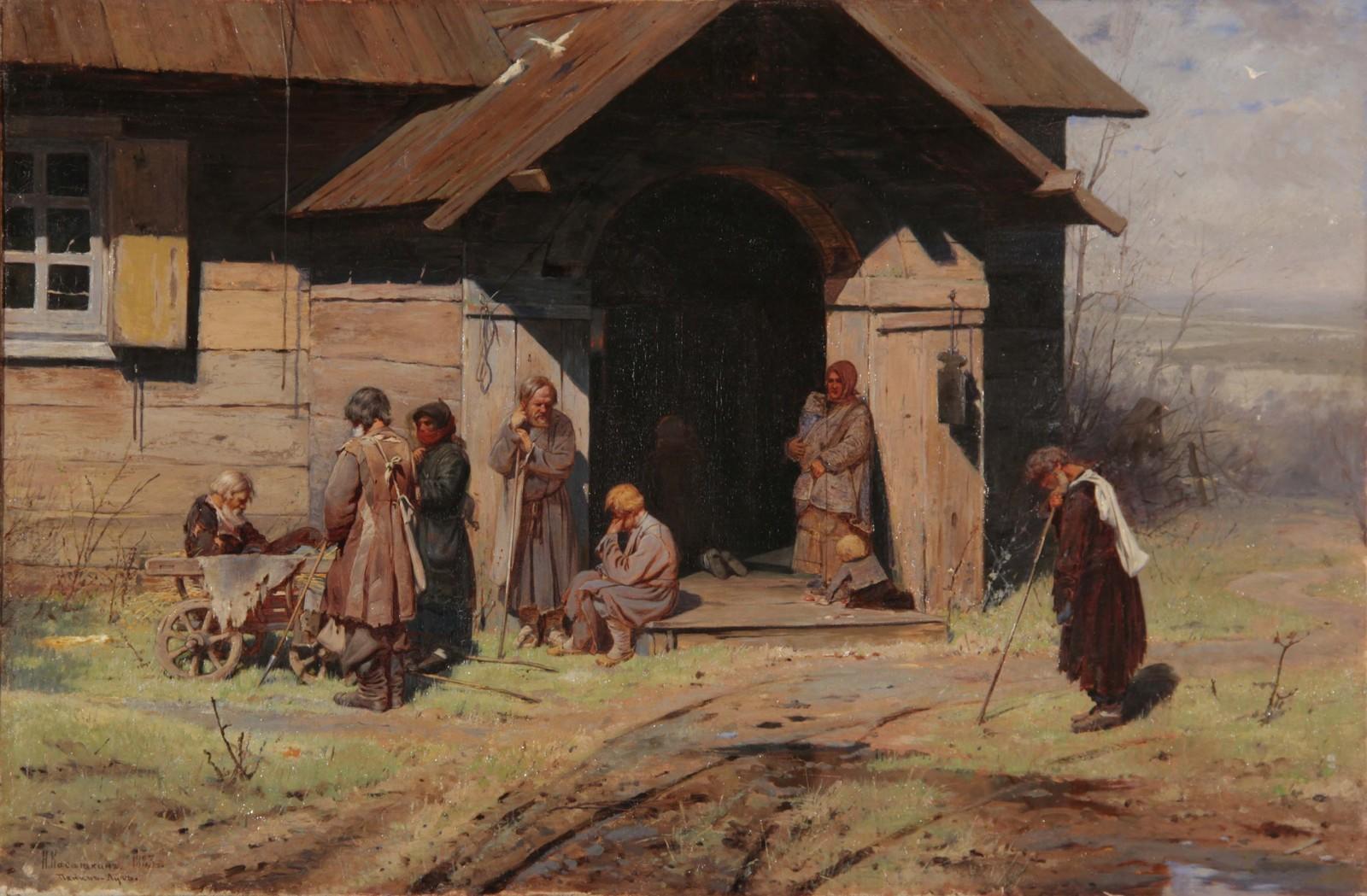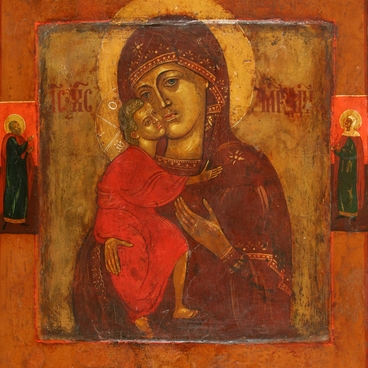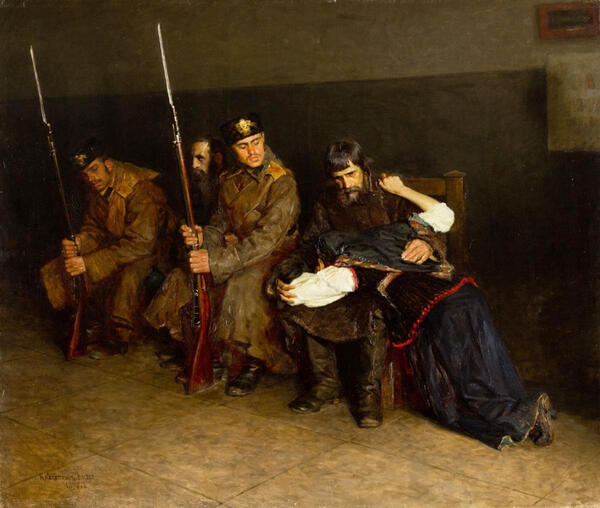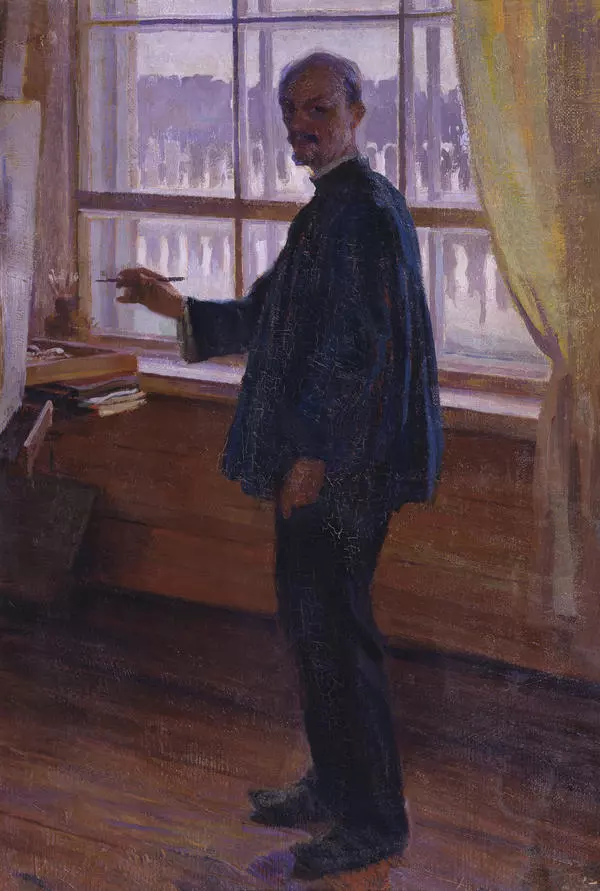Nikolay Kasatkin studied at the Moscow School of Painting, Sculpture and Architecture where his teachers were artists Illarion Pryanishnikov and Vasily Perov, then in the St. Petersburg Academy of Arts. In 1898 he became an academic, and in 1903 a fellow member of the Academy.
From the beginning of his career, Nikolay Kasatkin was following the traditions of democratic art. Since 1891, he began exhibiting with the Peredvizhniki, a group of Russian realist artists who played an important role in his professional development, as well as Leo Tolstoy, who was Kasatkin´s friend. It is not by chance that the artist´s paintings contain special references to the life of ordinary workers. This topic becomes central to Kasatkin’s work.
Upon completing his studies in 1883, Kasatkin received the highest award of the school — a large silver medal and the title of the artist for the painting “At the chapel” or “the Beggars on the Church porch”.
Following the current trends of his time, Nikolay Kasatkin showed the life of that part of society which was previously never depicted – broken people with a tough fate, illness and hunger.
In this work, Kasatkin manifests himself as a delicate color painter. He skillfully transmits the dim early spring in central Russia, defrosted ground, and a decent unpainted wooden chapel. With great compassion the artist portrays the poor people, waiting for alms and warming under the rays of the sun. Some details and the depiction of the nature are reminiscent of the painting “Easter Procession” by Kasatkin´s teacher Vasily Perov. There is the same mud and puddles under the feet of the characters, and a cloudy sky. At the left bottom of the painting, next to the signature and the year, there is an inscription: “Panin-Lug”. That was the name of the street in the village of Marfino near Moscow, where, probably, the artist worked on the painting.
Since the 1890s, Kasatkin´s work is forever linked with the life of the working class. For long time his paintings were exemplary for social realism artists.
The Omsk Museum received the painting from the State Museum Collection in 1925. Previously, it belonged to the famous Moscow collector Kozma Soldatyonkov.
Upon completing his studies in 1883, Kasatkin received the highest award of the school — a large silver medal and the title of the artist for the painting “At the chapel” or “the Beggars on the Church porch”.
Following the current trends of his time, Nikolay Kasatkin showed the life of that part of society which was previously never depicted – broken people with a tough fate, illness and hunger.
In this work, Kasatkin manifests himself as a delicate color painter. He skillfully transmits the dim early spring in central Russia, defrosted ground, and a decent unpainted wooden chapel. With great compassion the artist portrays the poor people, waiting for alms and warming under the rays of the sun. Some details and the depiction of the nature are reminiscent of the painting “Easter Procession” by Kasatkin´s teacher Vasily Perov. There is the same mud and puddles under the feet of the characters, and a cloudy sky. At the left bottom of the painting, next to the signature and the year, there is an inscription: “Panin-Lug”. That was the name of the street in the village of Marfino near Moscow, where, probably, the artist worked on the painting.
Since the 1890s, Kasatkin´s work is forever linked with the life of the working class. For long time his paintings were exemplary for social realism artists.
The Omsk Museum received the painting from the State Museum Collection in 1925. Previously, it belonged to the famous Moscow collector Kozma Soldatyonkov.
